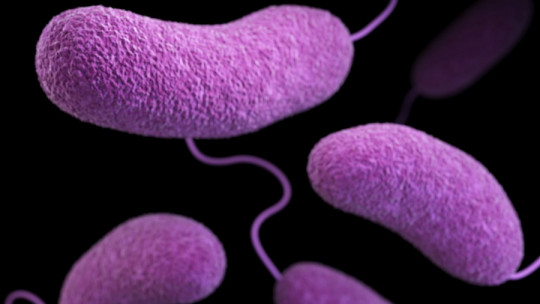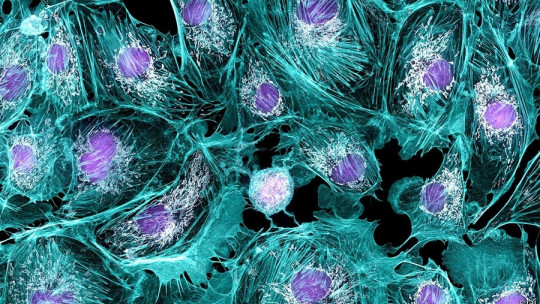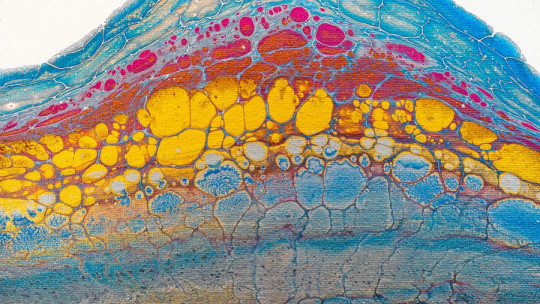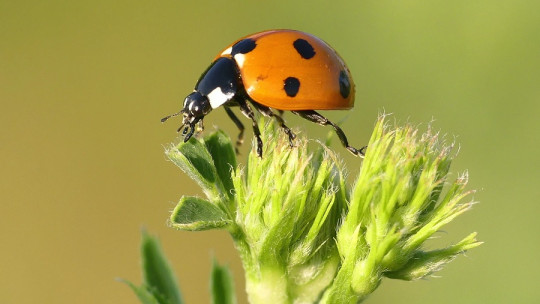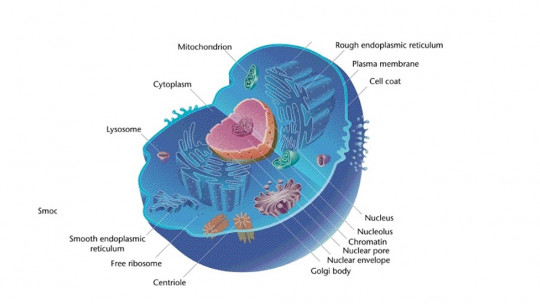Almost all living beings, no matter how simple or ancient, move in one way or another at some point in their lives.
Life (in addition to reproductive potential and the presence of at least one cell) implies a response to stimuli and, in order to escape from a threat or search for a source of food, direction towards a specific point is usually necessary.
Thus, we observe almost infinite motor structures in the animal kingdom: from cilia and flagella to the limbs of vertebrates, each taxon presents types of locomotion specialized for its environment and living habits. Even the simplest bacteria you can think of surely has some type of movement, whether directional or random, with a specific evolutionary purpose.
Today we come to show you the exciting phenomenon of taxis, innate behavioral responses that occur in living beings in the presence of external stimuli. Specifically, We explore the world of chemotaxis, typical in bacteria and other single-celled organisms
What is taxis?
Before introducing the prefix chemo-, from the Greek word khymei (alchemy), it is necessary to understand taxis in general terms.
The taxis are a behavioral response present in unicellular and multicellular organisms towards an external stimulus , either in order to get closer to it (attraction) or away from it (repulsion). Taxis can be classified according to the type of stimulus and whether the living being inherently selects it positively or negatively. Some examples are the following:
No matter how simple the term may seem, you have to be careful. Tropism and kinesis are also types of movement in living beings, but they differ from taxis at a conceptual and functional level We tell you their differences briefly.
Taxis vs kinesis
The main difference between taxis and kinesis is directionality In taxis, the living being directs its movement according to the presence or absence of the stimulus sought or repelled, be it light, water, oxygen or many other environmental parameters.
On the other hand, Kinesis is defined by non-directional movement Although in both cases the living being is responding to an external stimulus, in kinesis the animal does not move “towards”, but rather based on its comfort zone.
For example, a bacteria can make undirected movements if its environment is heated until it reaches a different comfort zone, but it is not moving anywhere specific. In general terms, if the movement is fast, the living being is looking for the comfort zone and, if it is slow, it has found it.
Taxis vs tropism
Tropism is typical of plants. It can be defined as a mechanism in response to stimuli that marks the direction and growth of the organism based on an external stimulus If you observe a seed sprout grow in an arched shape in search of a ray of light, you will be facing tropism.
The difference between both terms is that in taxis the organism presents motility. Whether through limbs, cilia, flagella, or body twists, the living being is actively moving toward or away from the stimulus. This is not the case of tropism since, as we have said, it is typical in plants (characterized by their absence of movement).
Chemotaxis: question of chemical concentrations
Without realizing it, we have defined chemotaxis at multiple points in our space. In general, it could be described as a type of biological phenomenon common in bacteria (but also present in other unicellular and multicellular types) in which these They direct their movement according to the concentration of chemical substances present in their environment
Chemotaxis is a quantifiable phenomenon that has been demonstrated on multiple occasions in the laboratory setting. In any case, in order for it to occur, certain requirements must be met. Among them, we find the following:
Chemotaxis allows single-celled beings find food in the environment (for example, monosaccharides such as glucose) and escape from toxic chemical agents that would cause their death Also, although it is far from the main meaning of the term, chemotaxis is useful for animals to guide themselves towards the pheromones produced by their sexual partners, in order to initiate courtship and reproduction.
We dedicate these last lines to exploring some of the chemotactic phenomena that go a little beyond a bacteria looking for food. Don’t miss them.
1. Chemotaxis and the immune system
The migration of white blood cells (macrophages, neutrophils and lymphocytes, for example) towards infected or inflamed body tissues is a chemotaxis phenomenon that supports the foundations of the immune system in humans.
In laboratory environments (in vitro) it has been demonstrated how these cell bodies have the ability to move directionally based on the concentration of certain chemical compounds While this is a conglomerate of 3 different types of movement: random, kinetic and chemotactic, the latter has been shown to be essential for immune responses to occur locally.
For example, phagocytes (a free circulating cell that has the property of trapping and destroying pathogens) move completely based on chemotactic stimuli. These They move to a certain location in response to concentrations of substances such as interleukin-I, thrombin, growth factor, immunoglobulins, leukotrienes and many more Once the pathogen is located, the phenomena of adhesion, endocytosis, destruction and elimination occur.
2. Chemotaxis and pheromones
Pheromones are chemical substances secreted by living beings, whose purpose is to provoke responses in other individuals of the same species, whether they are of the same gender or the opposite. Are They are volatile chemical signals in liquid form that are dispersed throughout the environment
This is a clear example of chemotaxis, although it is nothing like the typical definition of a bacteria using its cilia to approach a source of glucose in the environment. For example, if a bear rubs against a tree, it is probably not only relieving the itch it feels due to the parasitic agents present on its back (which is also true), but it is probably secreting pheromones that warn the rest of the males in the area about its presence. presence and physical superiority.
Thus, the rest of the males respond directionally to that specific stimulus, either moving away from the territory (to avoid confrontation) or approaching the source of the pheromone to challenge said dominant male and increase their chances of reproduction, if they manage to. defeat him in a confrontation. Due to the directionality of the response and the chemical basis of it, pheromone-mediated behaviors are considered chemotactic.
Summary
Taxis are an exciting phenomenon, since it is an intrinsic behavioral response that allows living beings to survive in the environment based on a tremendously simple premise: Based on the presence of a stimulus, I move closer (attraction) or away (avoidance) There are many types of taxis, since any environmental or biotic factor can modify the environment, thus changing the direction of the movement of the living being studied.
In particular, chemotaxis reports growing interest in the clinical setting. By studying the chemotactic mechanisms of bacteria in infectious processes, drugs can be devised that inhibit their mobile response to external agents, which would reduce the range of infection and its progress. Without a doubt, it is a fascinating topic, from both a medical and biological point of view.
- Acosta, EA, & Venegas, AA (2006). BIOPHYSICAL MODEL TO EXPLAIN THE PROCESS OF CHEMOTaxis. Colombian Journal of Physics, 38(2).
- Castellanos, NP, Lombardo, D., Makarov, VA, Velarde, MG, & Arena, P. (2011). Chemotaxis, Infotaxis and Memoraxis: exploration and survival strategies. Spanish journal of physics, 22(3).
- Galicia-Jiménez, MM, Sandoval-Castro, C., Rojas-Herrera, R., & Magaña-Sevilla, H. (2011). Bacterial chemotaxis and flavonoids: perspectives for the use of probiotics. Tropical and subtropical agroecosystems, 14(3), 891-900.
- Nápoles, MC, Gutiérrez, A., & Varela, M. (1998). Chemotaxis of Bradyrhizobium japonicum ICA 8001 toward organic acids and soybean seed exudates. Tropical Crops, 19(2), 27-29.
- Rojas-Dotor, S., Pérez-Ramos, J., & Rico-Rosillo, MG (2009). Chemotaxis and disease. Medical Journal of the Mexican Social Security Institute, 47(1), 51-56.
- Taxis, biologyonline.com. Collected on February 2 at https://www.biologyonline.com/dictionary/taxis#:~:text=Taxis%20is%20a%20behavioral%20response,organism%20to%20an%20external%20stimulus.

